Recent Articles
Popular Makes
Body Types
10 Roomy Crossovers
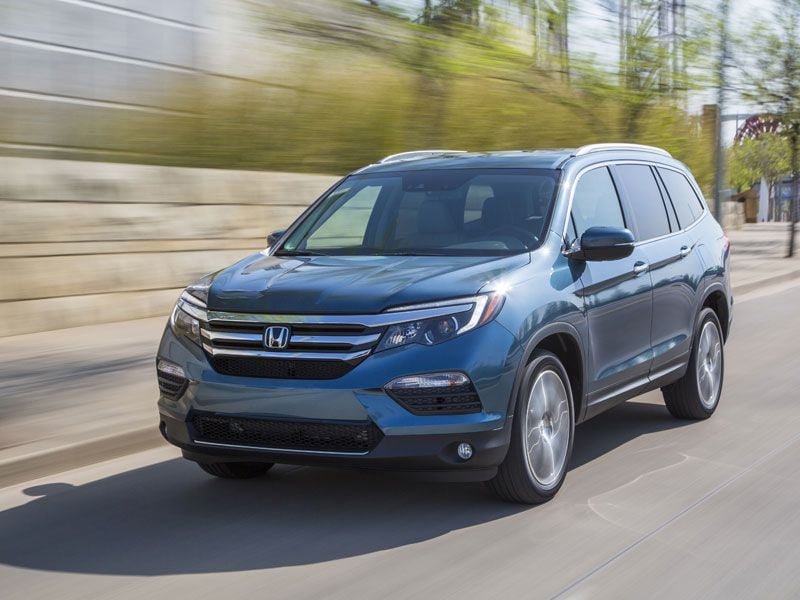
2017 Honda Pilot ・ Photo by Honda
Roomy crossovers are the ones that take the best advantage of their SUV-like shapes to offer maximum cabin space. It goes beyond just cargo-carrying capacities; while a typical crossover can carry up to five times more gear than a similarly sized sedan, the crossovers on this list combine that benefit with an equally impressive amount of space for occupants. Our favorite
Our favorite roomy crossovers are impressive in other ways, too. Our picks on this list here build on their spaciousness with innovative infotainment and driver-assistance technologies. To appeal to more customers, we've also extended our list to cover leading examples from all segments, so there may be some names you’re not expecting.
2017 Honda Pilot
The 2017 Honda Pilot has the most passenger volume among this year’s crop of roomy crossovers, and all that space for occupants is backed by a lot of space for cargo as well. In fact, the 3-row Pilot has 83.9 cubic feet of cargo storage in total—but that’s as typically measured. Honda helpfully points out that, if you count the floor space between the first and second rows, and pull the front row forward as far as possible, customers can cram in 109 cubic feet of gear. Alternatively, there are 16.5 cubic feet of storage if all seats are being used, or 46.8 cubic feet with only the third row folded.
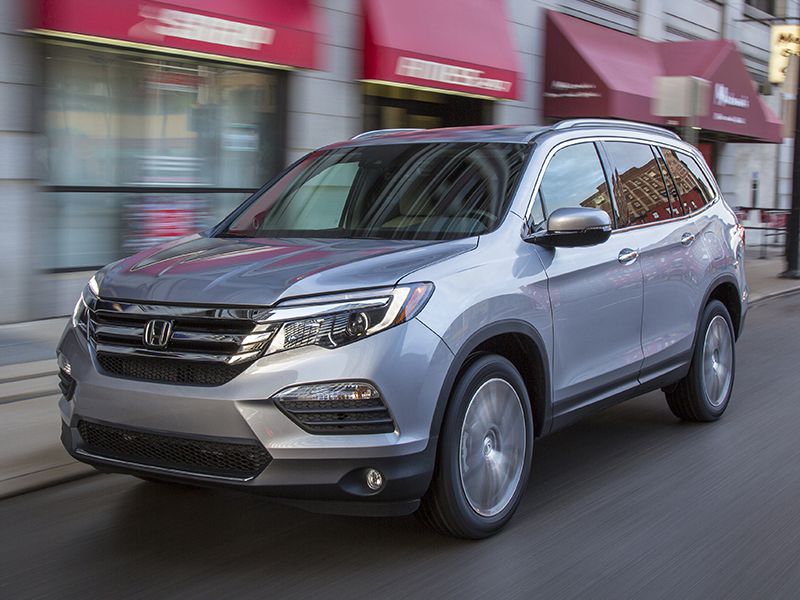
Photo by Honda
2018 Chevrolet Traverse
The 2018 Chevrolet Traverse is an all-new model debuting this fall, and per Chevy, it will set a fresh benchmark for roomy crossovers with the most passenger volume in its class. Exact numbers have yet to be specified, but the updated Traverse checks in with 23 cubic feet of cargo space behind the rear seats, 58.1 behind the middle seats, and 98.5 in total. That said, the 2017 Traverse, on sale currently, actually has 116.3 cubic feet of total storage behind the front seats—plus a healthy 150.8 cubic feet of passenger volume when all three rows are in use.
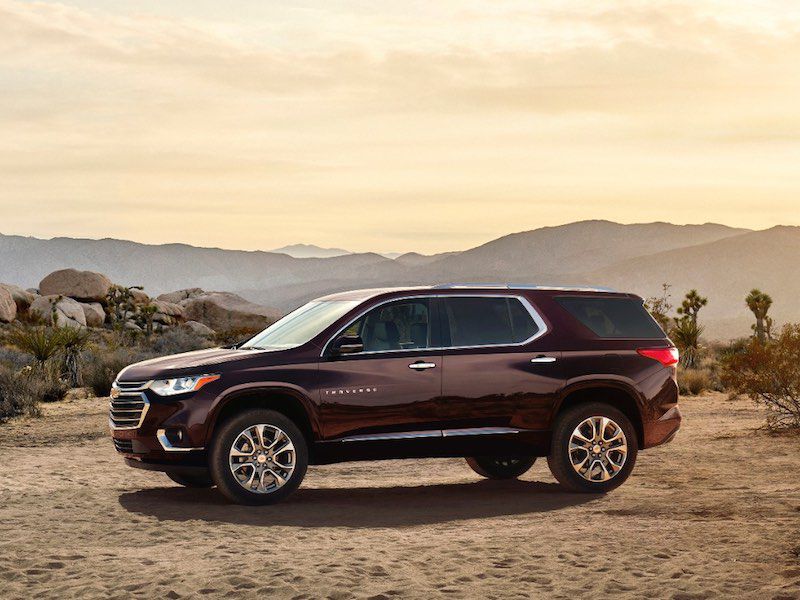
Photo by General Motors
2017 Ford Flex
Nor should you overlook the 2017 Ford Flex if you’re looking for roomy crossovers. Although it’s not always considered a direct rival for the Chevy Traverse or Honda Pilot—since the Ford Explorer has that role—the Flex showcases a whopping 155.8 cubic feet of passenger space across its three rows of seating. Credit for that no doubt goes to vehicle’s upright shape, which also enables a fair amount of stowage. More specifically, the Flex can accommodate 83.2 cubic feet of gear all told, fit 43.2 cubic feet behind its second row, and handle 20 cubic feet with all seats occupied. The Explorer has 151.5 cubic feet of passenger volume and an 81.7-cubic-foot cargo maximum.
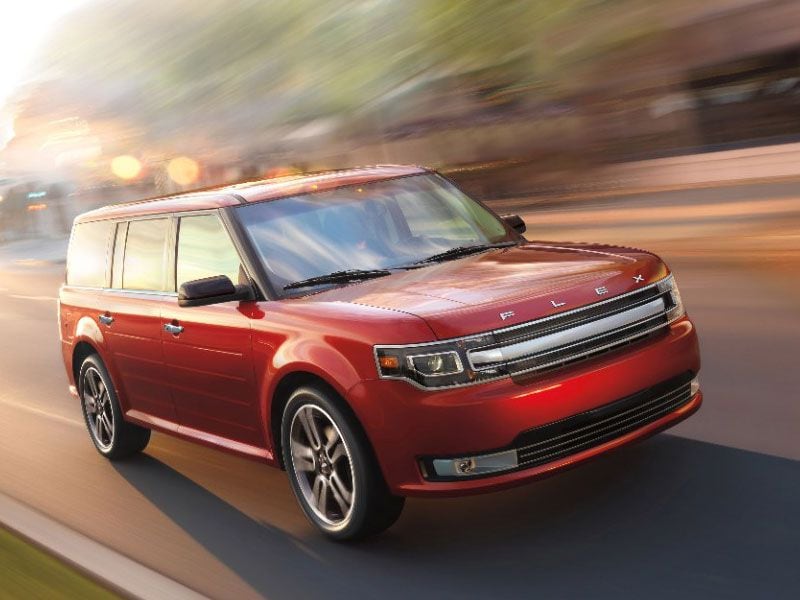
Photo by Ford
2017 Chevrolet Equinox
The 2017 Chevrolet Equinox has a distinctly larger footprint than most other compact crossovers, which has a corresponding impact on passenger volume. Two rows of occupants can spread out in 127.2 cubic feet of comfort; no other mainstream compact crossover has more than 109 cubic feet of space for people. Moreover, even if the Equinox doesn’t have the most room for gear in the segment, it does have 63.7 cubic feet overall and 31.5 when both rows of seat backs are in their upright positions. Don’t forget, however, that the ’Nox is all new for 2018, with the new model topping out with 103.2 cubic feet of passenger volume and 63.5 cubic feet of total cargo volume.
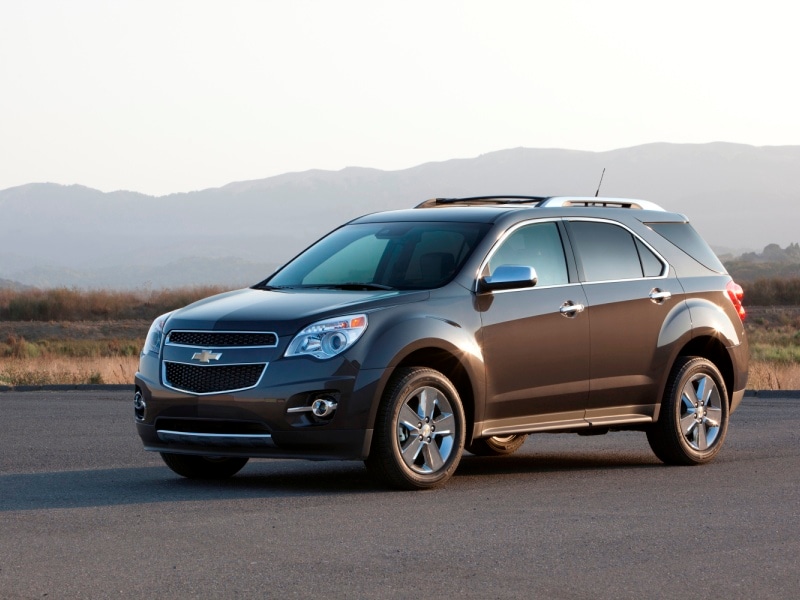
Photo by Chevrolet
2017 Subaru Forester
Chalk up another significant benefit for the 2017 Subaru Forester. Beyond its standard symmetrical all-wheel drive and available Top Safety Pick+ certification, the Forester also is surprisingly spacious for a compact entry. Also, as is the case with many roomy crossovers, the Forester checks in at the upper end of the segment for both cargo space and passenger volume. As regards the former, the Subaru serves up 34.4 cubic feet behind its second row, plus 74.7 cubic feet with its rear seatbacks folded down. It’s more room for gear than not only the Chevy, but also the Ford and Nissan rivals. The Forester next caters to its occupants with 108.3 cubic feet of passenger space.
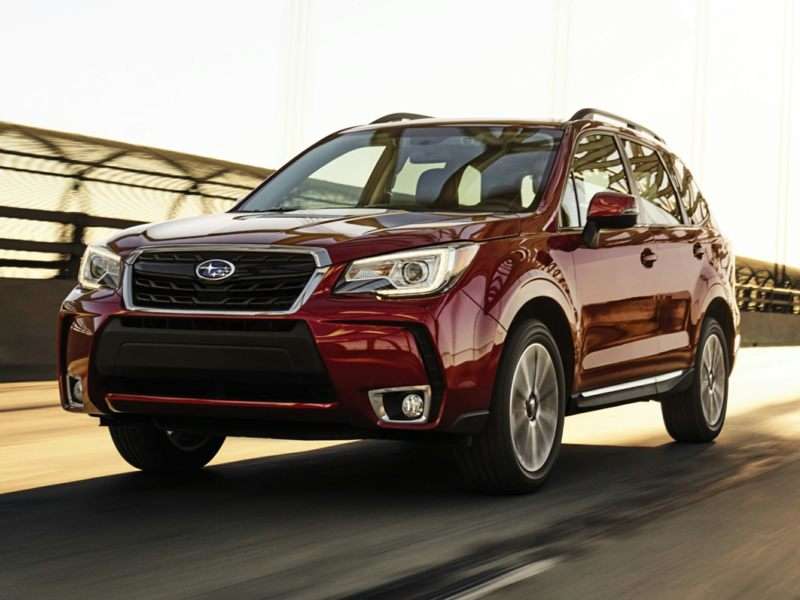
Photo by Subaru
2017 Honda CR-V
Efficient packaging is a hallmark of roomy crossovers in general and of the 2017 Honda CR-V in particular. As a result, the CR-V is able to provide best-in-class cargo space measurements despite being half a foot shorter in length than its Bowtie-brand competitor. The tale of the tape here includes 39.2 cubic feet of volume in the CR-V’s rear cargo hold and 75.8 cubic feet after folding the rear seatbacks. The CR-V additionally stacks up well against its rivals when it comes to occupant comfort, since it delivers 105.9 cubic feet of passenger volume.
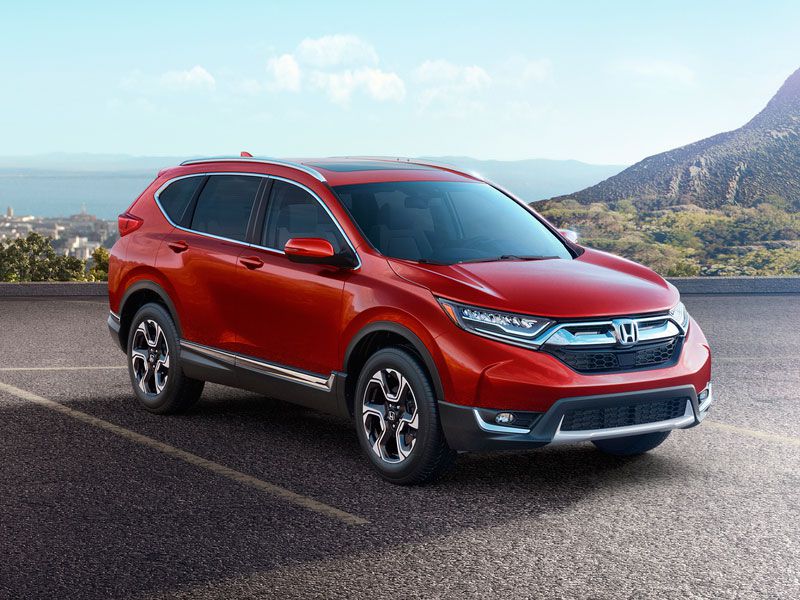
Photo by Honda
2017 Ford Edge
Like the Ford Flex, the 2017 Ford Edge is a bit of niche vehicle. The Blue Oval has the Ford Escape as its high-volume 2-row entry, with the Edge furnishing a slightly more premium experience that includes a 5-place cabin in a closer-to-mid-size vehicle length. That rare combination of traits allows for a lot of space for all occupants, who enjoy 113.9 cubic feet of passenger volume—an especially large amount for a 2-row crossover. Yet at the same time, the Edge matches the Honda CR-V with 39.2 cubic feet of storage behind the rear seats, and that can be expanded to more than 73 cubic feet by folding the rear seatbacks out of the way.
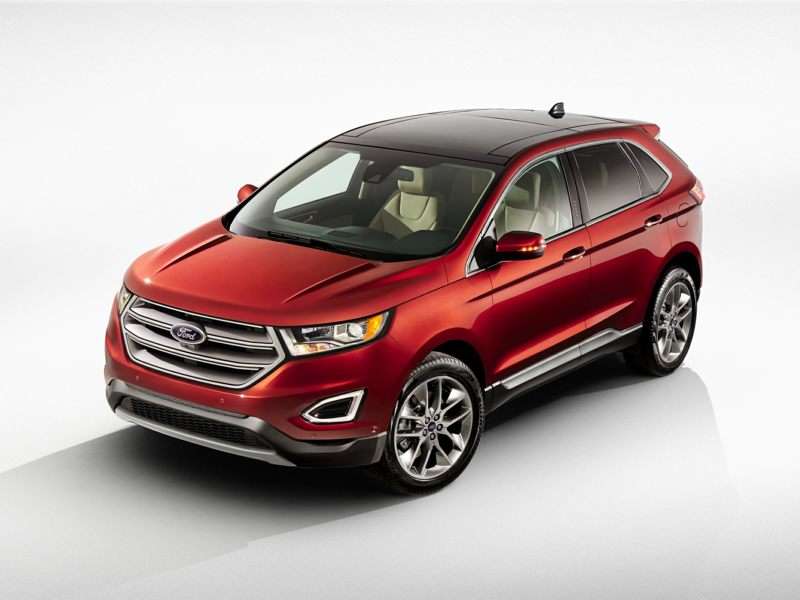
Photo by Ford
2017 Jeep Compass
Jeep purists may wonder what the 2017 Jeep Compass is doing with our roomy crossovers, but that’s the competition for the brand’s subcompact SUV—which, to be clear, comes with standard front-wheel drive and car-like unibody construction. Further, this is the all-new global Compass, as opposed to the old-school version that has the same name and model year designation. What the re-engineered Compass has is a standard rear cargo hold that can fit 27.2 cubic feet of gear without folding the back seats. No other subcompact crossover exceeds that mark. The Compass also scores well with 59.8 cubic feet of rear storage if you do fold down the rear seats. Sealing the deal: 99.6 cubic feet of passenger space.
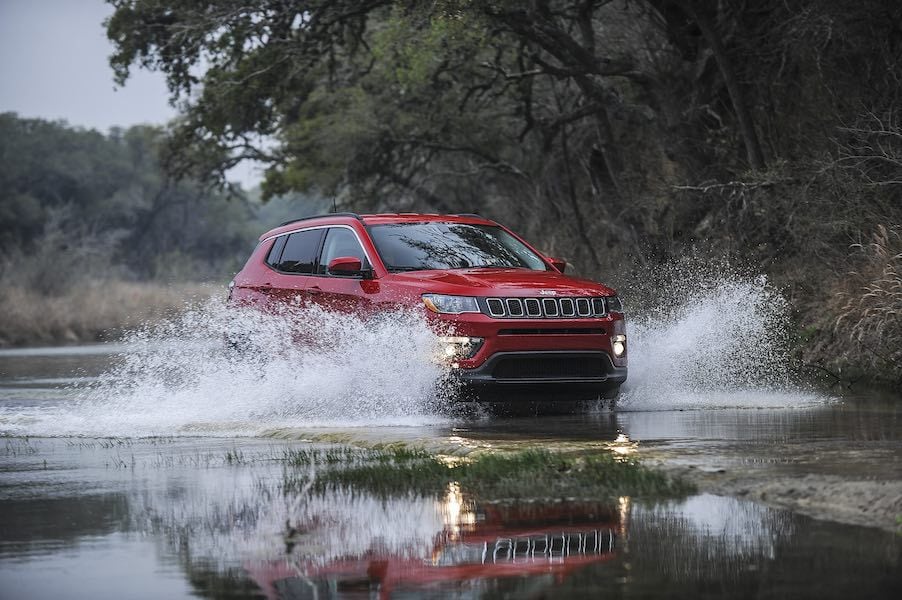
Photo by Jeep
2017 Kia Soul
The funky fresh 2017 Kia Soul may not be quite as fresh as it used to be, but it still stands out from the rest of the small-but-roomy crossovers—in terms of both style and storage. Indeed, though the Soul is about 10 inches shorter in length than the new Jeep Compass, it has a tad more overall cargo space (61.3 cubic feet) and more passenger volume (101 cubic feet) than the Jeep. Kia doesn’t exactly stint on cargo space aft of the rear seats, either. The Soul has 24.2 cubic feet of rear storage with all seats in their standard positions. Luggage also can be stored below the Soul’s rear cargo tray, though that does impact storage space above.
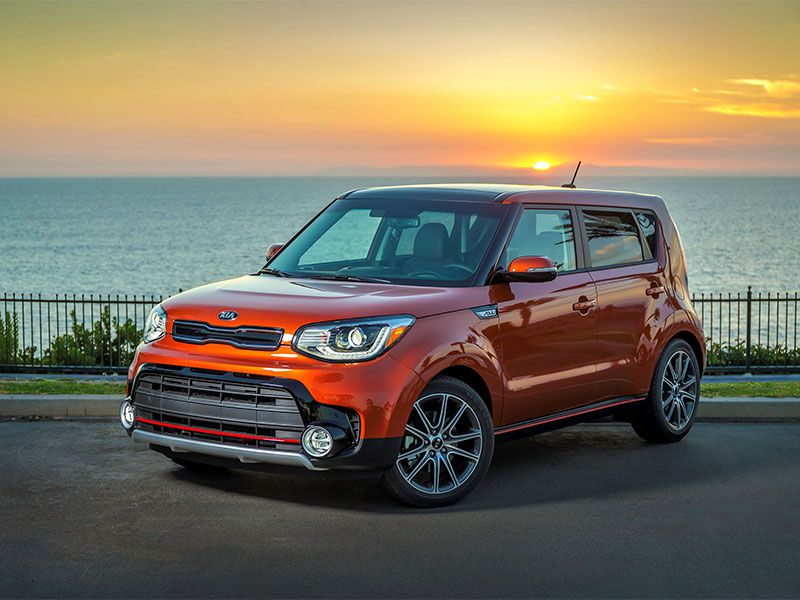
Photo by Kia
2017 Honda HR-V
Rounding out today’s gallery of roomy crossovers is the subcompact 2017 Honda HR-V. Leveraging the brand’s engineering expertise, the HR-V has 24.3 cubic feet of rear storage in its standard seating configuration. Naturally, the rear seatbacks also can be folded, and in that scenario, the HR-V can be stuffed with 58.8 cubic feet of cargo. Honda complements that storage versatility with 100.1 cubic feet of people space, creating one of the largest passenger cabins in the segment. True, some rivals, like the 2017 Toyota CH-R, have more passenger volume, and others, such as the 2017 Nissan Rogue Sport, can squeeze in a little extra cargo. But neither have the all-around versatility of the Honda.
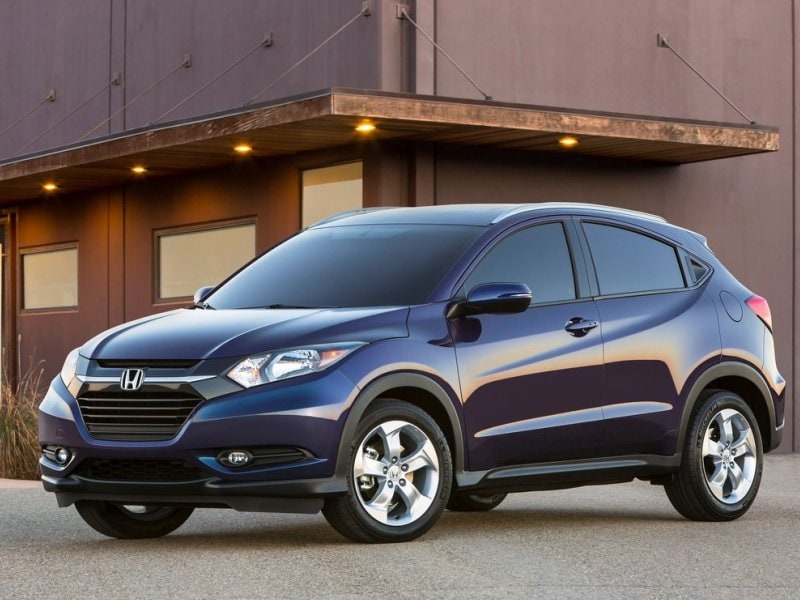
Photo by Honda